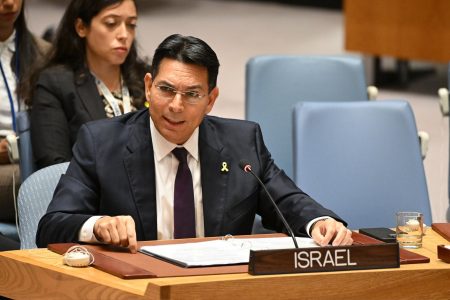The Syrian political landscape has been dramatically reshaped by a swift and powerful offensive launched by opposition forces, culminating in their entry into Damascus, the capital city, and the capture of Homs, the nation’s third-largest city. This rapid advance has signaled a potentially crippling blow to the regime of President Bashar al-Assad, with U.S. officials acknowledging the increasing plausibility of his imminent downfall. The rebels’ momentum has sparked widespread panic and exodus among Damascus residents, while celebrations erupted in opposition-supporting areas. The strategic significance of Homs, a crucial link between Damascus and Assad’s coastal strongholds, underscores the gravity of the situation for the embattled president. The opposition forces, spearheaded by the controversial Hay’at Tahrir al-Sham (HTS), a group with al-Qaida origins designated as a terrorist organization, have achieved their most substantial territorial gains in recent years. This swift change in the balance of power raises pressing questions about Syria’s future and the potential for further regional instability.
The rapid deterioration of the Assad regime’s control is evident in the dwindling number of provincial capitals under its authority. Of Syria’s 14 provincial capitals, only Damascus, Latakia, and Tartus remain under government control, with the latter two serving as Assad’s strongholds and hosting a Russian naval base. The opposition’s advance has been marked by the capture of key cities like Aleppo and Hama, paving the way for their push towards Damascus. The fall of Homs, a city of significant symbolic and strategic value, further weakens Assad’s grip on power and disrupts vital supply lines. The escalating conflict has created a humanitarian crisis, with thousands of Damascus residents fleeing towards Lebanon amid widespread shortages and escalating prices of essential goods. The United Nations, recognizing the deteriorating security situation, has begun evacuating non-essential staff from the country.
The opposition’s offensive has not only targeted strategic cities but also symbolic locations. The toppling of a statue of former Syrian President Hafez al-Assad in Deraa, the fourth city captured by rebels in a week, signifies the rebels’ intent to dismantle the legacy of the Assad dynasty. The insurgents’ penetration into the Damascus suburbs, including Maadamiyah, Jaramana, and Daraya, and their advance towards Harasta, further intensifies the pressure on the regime and raises concerns about the potential for fierce urban warfare within the capital. These developments underscore the rapidly changing dynamics on the ground and the increasing vulnerability of the Assad regime.
The international community’s response to the escalating crisis has been marked by calls for dialogue and a cautious approach to intervention. Russia, a key ally of the Assad regime, has advocated for dialogue between the government and the opposition, while Qatar has criticized Assad for failing to capitalize on previous opportunities for peace. The United States, under both the outgoing Trump and incoming Biden administrations, has signaled its reluctance to intervene militarily, emphasizing that the conflict is not America’s fight. Iraq, a neighboring country with a vested interest in regional stability, has also indicated it has no plans to send troops into Syria, preferring to pursue a political solution. This cautious approach underscores the complex geopolitical considerations surrounding the Syrian conflict and the potential risks of external intervention.
The lightning-fast offensive launched by the Syrian opposition forces, culminating in their entry into Damascus and the capture of Homs, has dramatically altered the trajectory of the Syrian conflict. The Assad regime, facing the loss of significant territory and the increasing plausibility of its collapse, finds itself in a precarious position. The rapid advance of the opposition, led by the controversial HTS, poses complex challenges for regional stability and international diplomacy. The unfolding crisis demands a delicate balance between calls for dialogue, concerns about humanitarian consequences, and the potential ramifications of external intervention. The fall of Homs, coupled with the opposition’s advance on Damascus, marks a pivotal moment in the protracted Syrian conflict, raising critical questions about the future of the country and the region.
The international response to the Syrian crisis has been characterized by a cautious approach to direct military intervention, coupled with calls for dialogue and political solutions. The United States, under both the Trump and Biden administrations, has expressed its reluctance to get involved militarily, emphasizing that the conflict is not America’s responsibility. Russia, a key ally of the Assad regime, has advocated for dialogue between the government and what it considers legitimate opposition groups. However, the involvement of HTS, a designated terrorist organization, complicates the dynamics of any potential negotiations. Iraq, grappling with its internal challenges and regional security concerns, has also refrained from military intervention, focusing instead on diplomatic efforts to find a political solution. The complex interplay of regional and international actors underscores the challenges of resolving the Syrian conflict and the need for a comprehensive and inclusive approach to address the root causes of the crisis.










